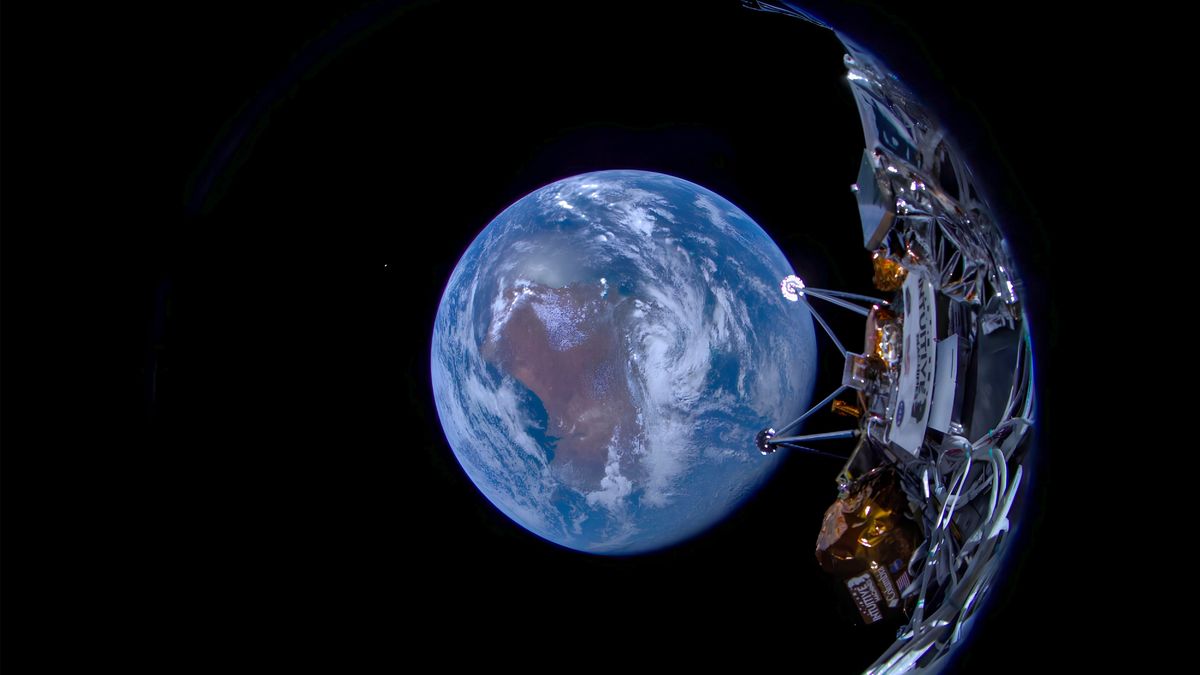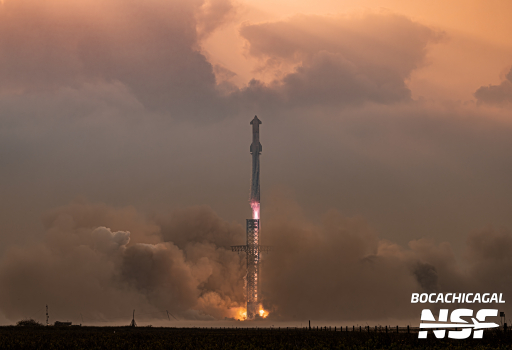Human technology such as cell phones and broadcast towers constantly radiate radio waves ROOMand astronomers estimate that this telltale sign of humanity has been included 75 nearby star systems, signaling to any alert alien civilization that Earth hosts a technologically advanced species. And while scientists have been listening to the incessant radio chatter from our planet for a long time, at the end of February, they heard it from the moon for the first time. time.
A small radio telescope aboard the spacecraft Odysseus, the first commercial vehicle to successfully landed on monday february 22 recorded radio waves were transmitted by earth for 1.5 hours. The experiment, called ROLSES, made its observations from the Odysseus landing site near the Malapert A crater, which is located approximately 297 kilometers away. away from the moonthe south pole.
Astrophysicist Jack Burns of the University of Colorado Boulder, who is a ROLSES co-investigator, described the moment as “the dawn of radio astronomy from the moon.” Studying the Earth as one exoplanetsastronomers hope to look for similar fingerprints coming from other surrounding planets STARSwhich would be a possible sign of intelligent life.
Speaking Monday (June 10) at the 244th meeting of the American Astronomical Society in Wisconsin, Burns pulled up an image on the screen in which tiny white dots appeared to be sprinkled over a black background, mostly forming horizontal lines. . “This is Earth,” he said.
The white dots are radio signals from transmitters on Earth as recorded by the four antennas of the ROLSES experiment. It’s “a really good Earth frequency ‘selfie.’ […] this is unprecedented to date” in terms of viewing Earth at radio wavelengths, Burns added.
Connected: Intuitive Machines’ private moon landing Odysseus ‘faded forever’ on lunar surface as historic mission ends
During its historic landing on February 22, the 14-foot (4.3-meter) spacecraft Odysseus descended faster than planned and flipped onto its side, likely because it fracture one or two of its landing legs after hitting some of the lunar terrain, Tim Crain, Intuitive Machines co-founder and CTO, said before. As a result of this unexpected orientation, the spacecraft’s antennae were not pointed at Earth, greatly reducing the speed at which data could be sent.
Perhaps because of these problems, the ROLSES instrument recorded data for a total of two hours instead of the eight days astronomers expected, Burns said Monday. The reduced time would affect the signal-to-noise ratio of the data collected, he added. It was not immediately clear whether researchers would be able to decode the transmissions to determine the content of those radio waves.

The researchers also collected a memorable 20-minute data when one of Odysseus’ antennas overheated and popped out of its safe place on the lander. “So we took advantage of that, turned on our radio spectrometer and got some data,” Burns said.
After a week of operations in MONDAY, Odysseus fell silent on February 29 as sunset hit its landing site, which was to be expected since the spacecraft was not designed to survive the cold lunar night. When sunlight shone again on Odysseus’ solar panels on March 20, Intuitive machines, the Houston-based company that built the spacecraft, listened but failed to heed its wake-up call. Three days later, the company DECLARING “Odie has faded forever after cementing its legacy in history as the first commercial lunar lander to land on the moon.”
Astronomers including Burns are now looking ahead to the launch of another small radio telescope expected to be launched on the far side of the Moon in 2026. The Lunar Surface Electromagnetic Experiment-Night, or LuSEE-Night for short, is being designed to detected radio waves from 13.4 billion years ago, a mysterious era when UNIVERSE and its first stars and galaxies were shrouded in a primitive hydrogen haze. Astronomers refer to this era as Cosmic Dark Ageswhich The James Webb Space Telescope investigations have just begun.



